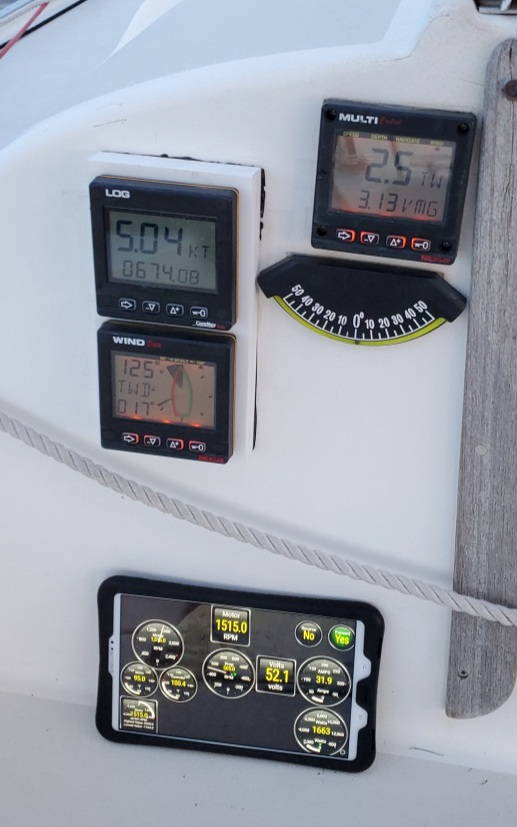

| Pearson 10M Electric Drive |
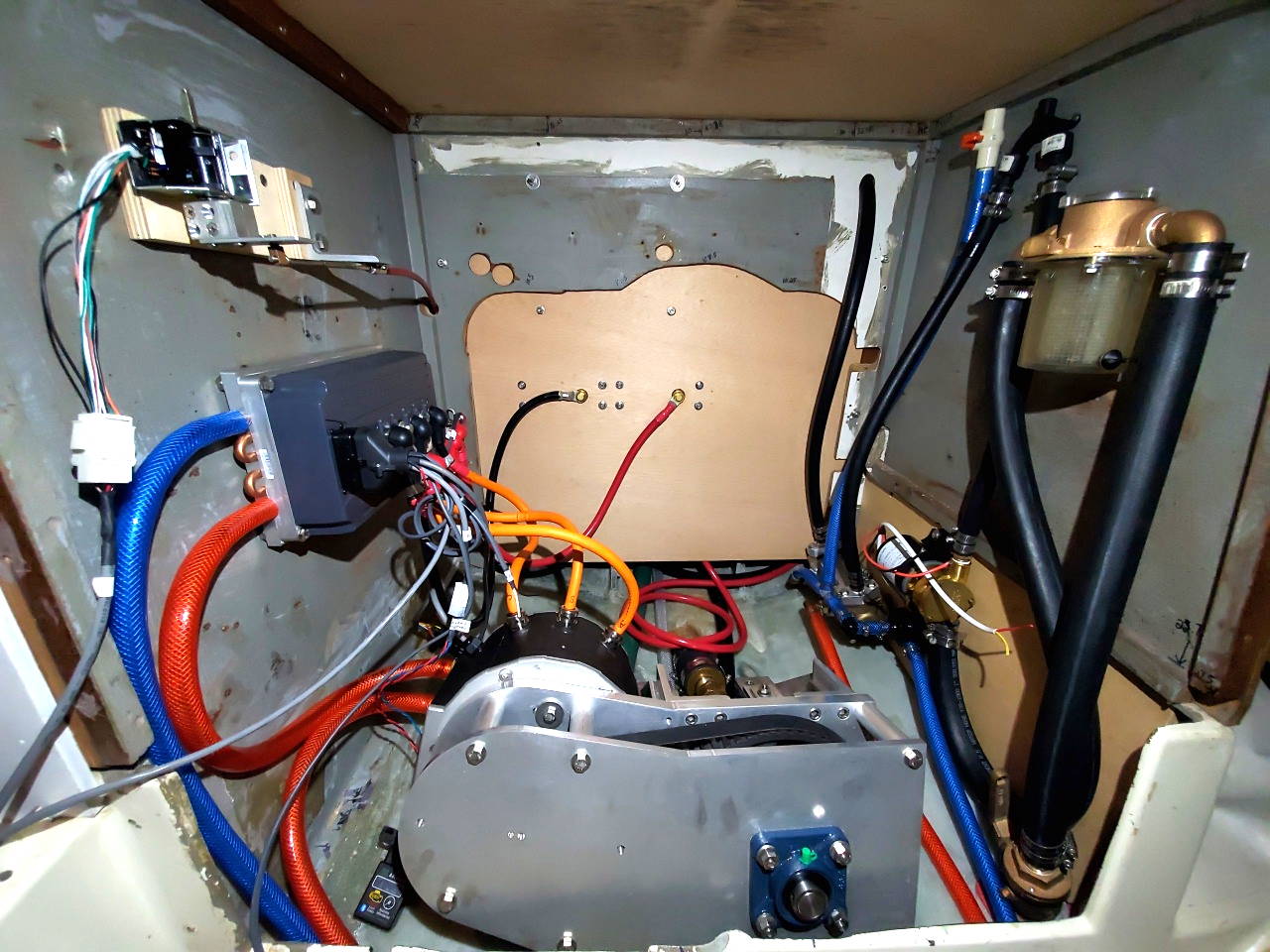
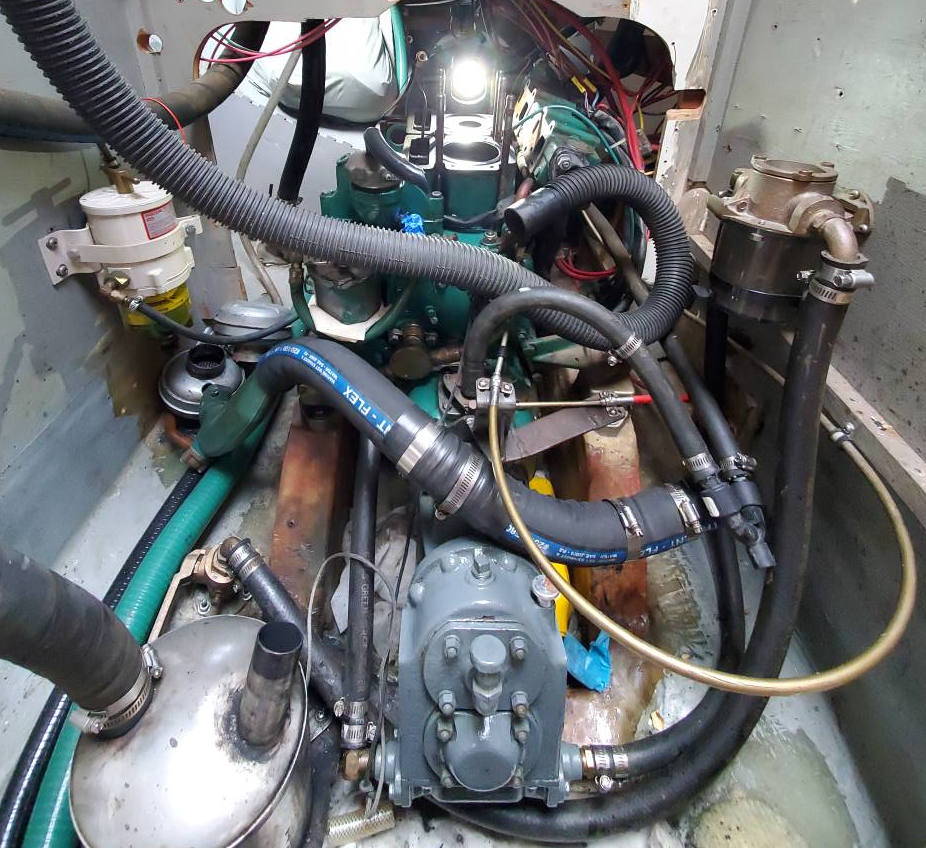
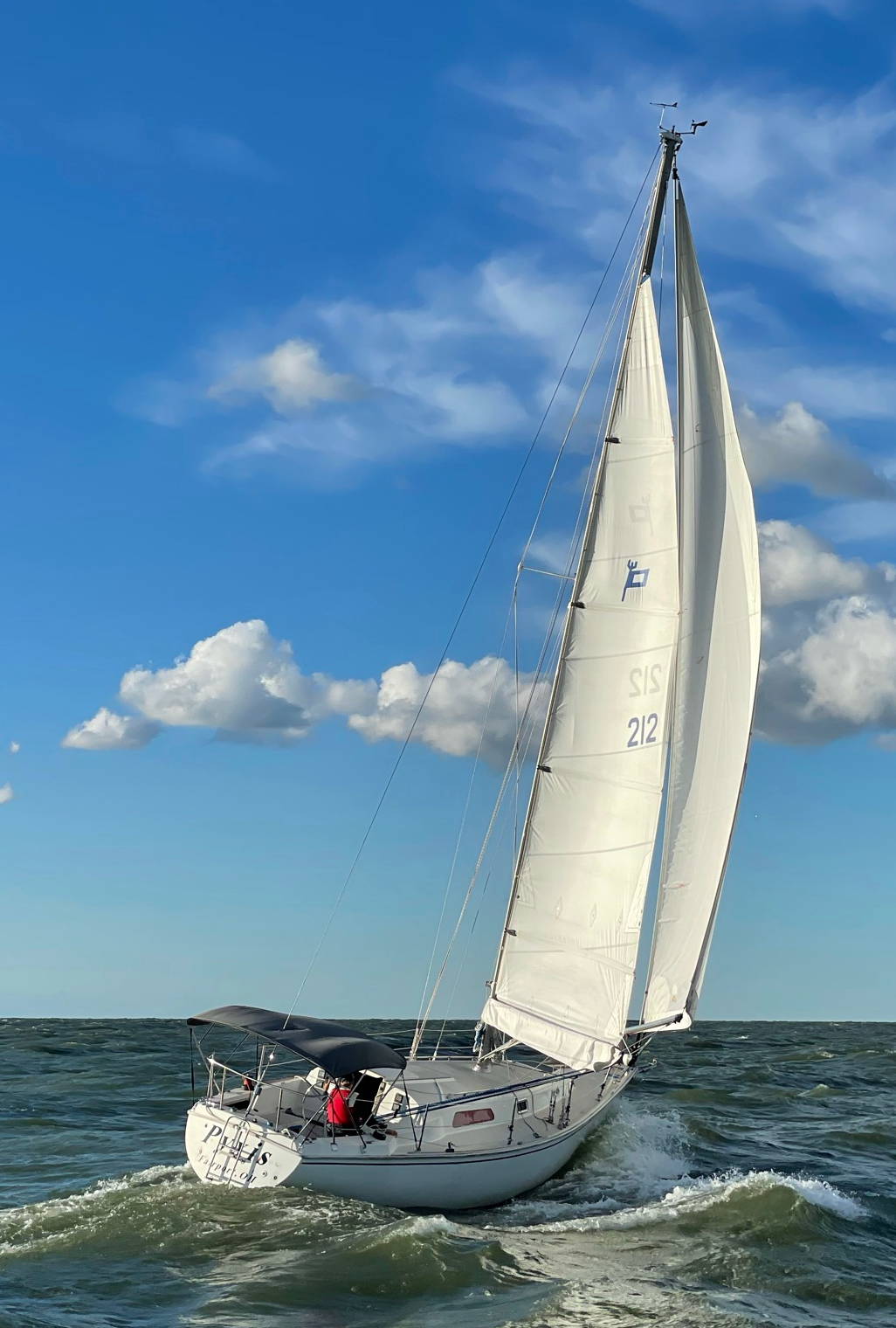 In the fall of 2020 my 43 yr old Volvo diesel blew a head gasket. I considered fixing it (gasket kits are available) but on inspection there was some erosion on the cylinder head. That could be dealt with but the cost of a refresh (rings, injector service, full gasket replace, bearings, etc) was probably going to be several thousand dollars. A new diesel would cost about $16K just for the motor (plus another 1500? for materials for new beds, couplers, etc) with me doing all the install work. I decided to go electric with a 12kW kit from Thunderstruck Motors.
In the fall of 2020 my 43 yr old Volvo diesel blew a head gasket. I considered fixing it (gasket kits are available) but on inspection there was some erosion on the cylinder head. That could be dealt with but the cost of a refresh (rings, injector service, full gasket replace, bearings, etc) was probably going to be several thousand dollars. A new diesel would cost about $16K just for the motor (plus another 1500? for materials for new beds, couplers, etc) with me doing all the install work. I decided to go electric with a 12kW kit from Thunderstruck Motors.
Quick Summary Noise
Cost
I have a lot more details to share on the system and all the considerations but for now here are some drawings and photos of the installation. |
* Capacity to motor 20 miles at 4 knots. This would define the minimum size of the battery bank.
* Capacity to reach 85 or 90% of hull speed. This would define the size of the motor.
* Capacity to run continuously at 5.5 to 6 knots (with a generator). This would define the size of the cooling system.
* The motor should be brushless.
* Add a diesel genset capable of driving the boat continuously at 5.5 to 6 knots. This is a phase 2 consideration to be added later.
* Add solar charging capacity of 3-500 watts if possible to be placed over the cockpit in place or on top of the bimini. That would be about 50 sqft. Also to be added later.
* The installation should have a reduction drive to get prop rotation at 800 rpm for the 18" feathering prop.
|
Limits Through my research I found you run into limits in the different aspects of electric drive system design. For example, if you have a 10kW motor but you have a battery max output capacity of 5kW your useable motor capacity is limited to 5kW. I wrote up a seperate page to discuss the limits and how they need to be accounted for in the system design. |
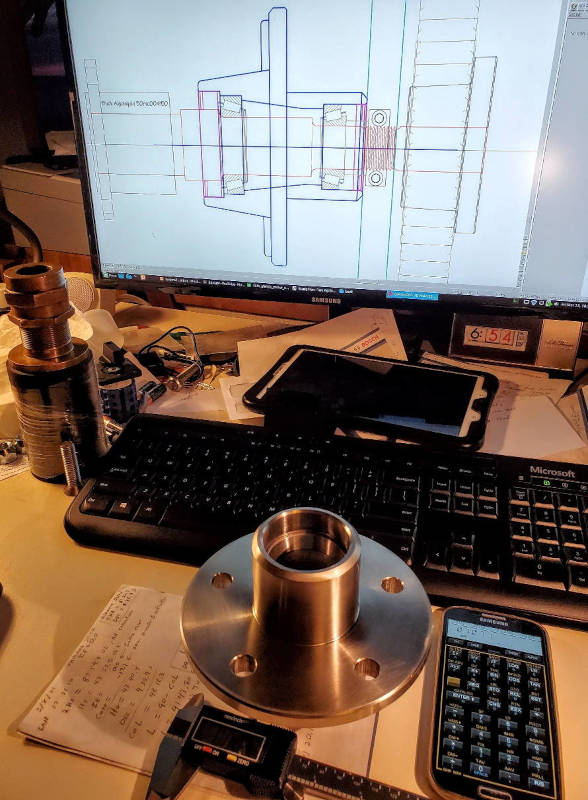
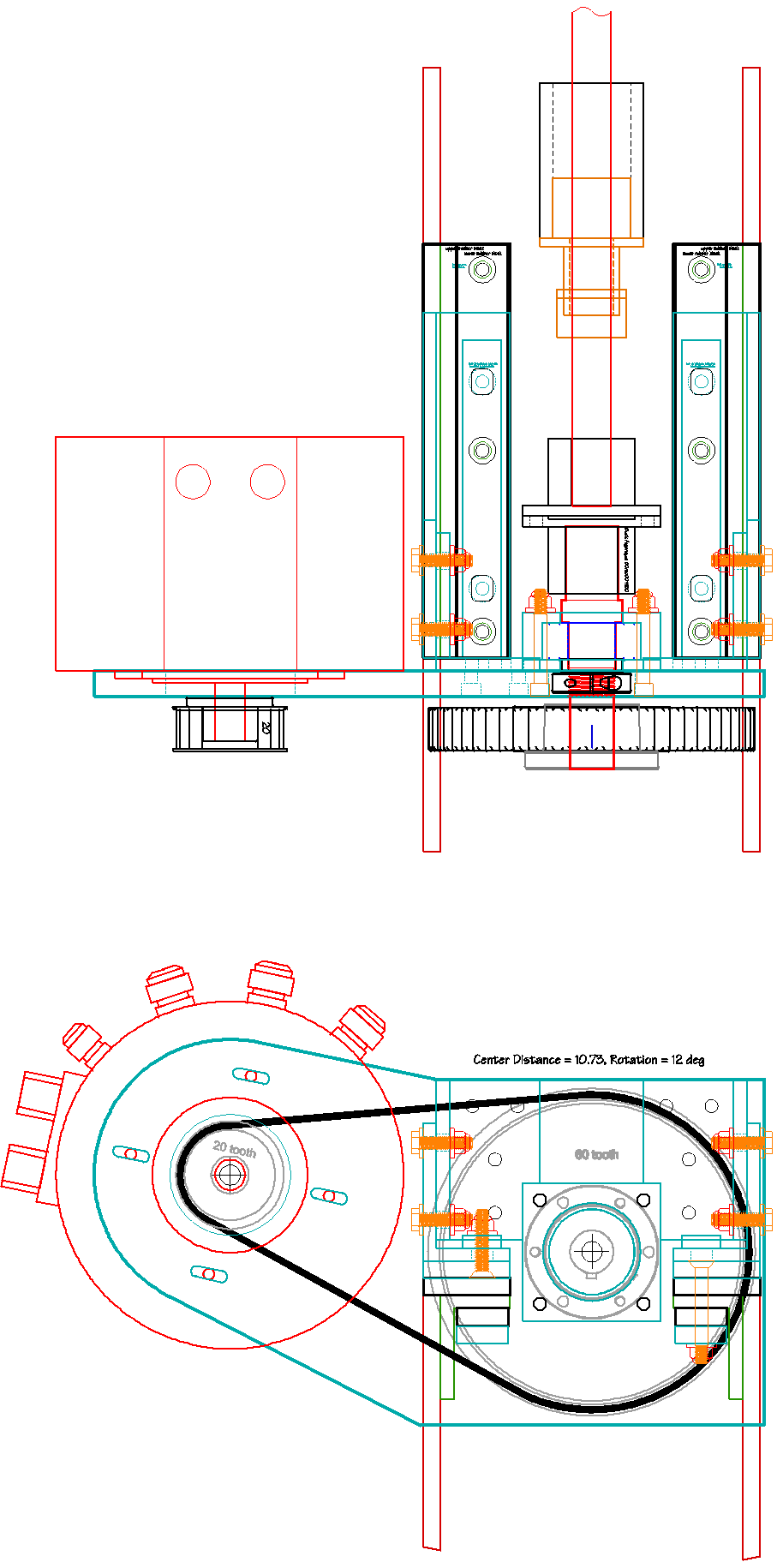


|
